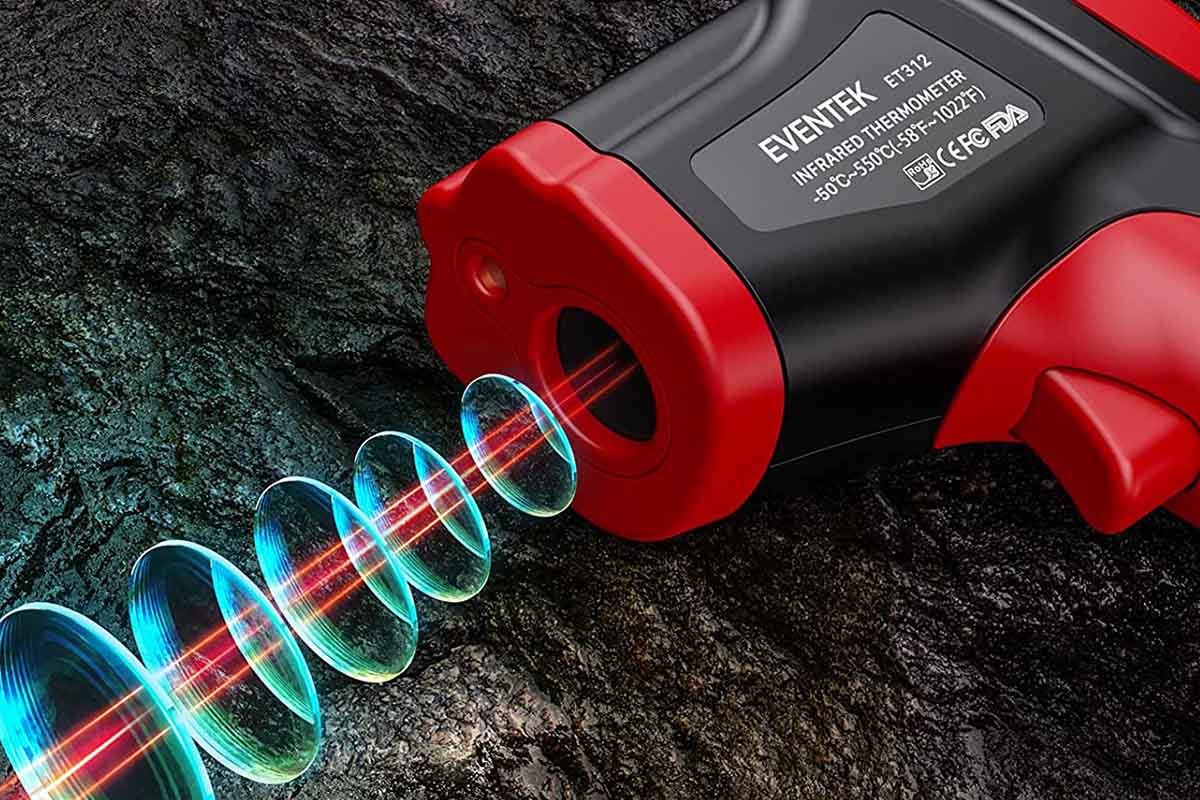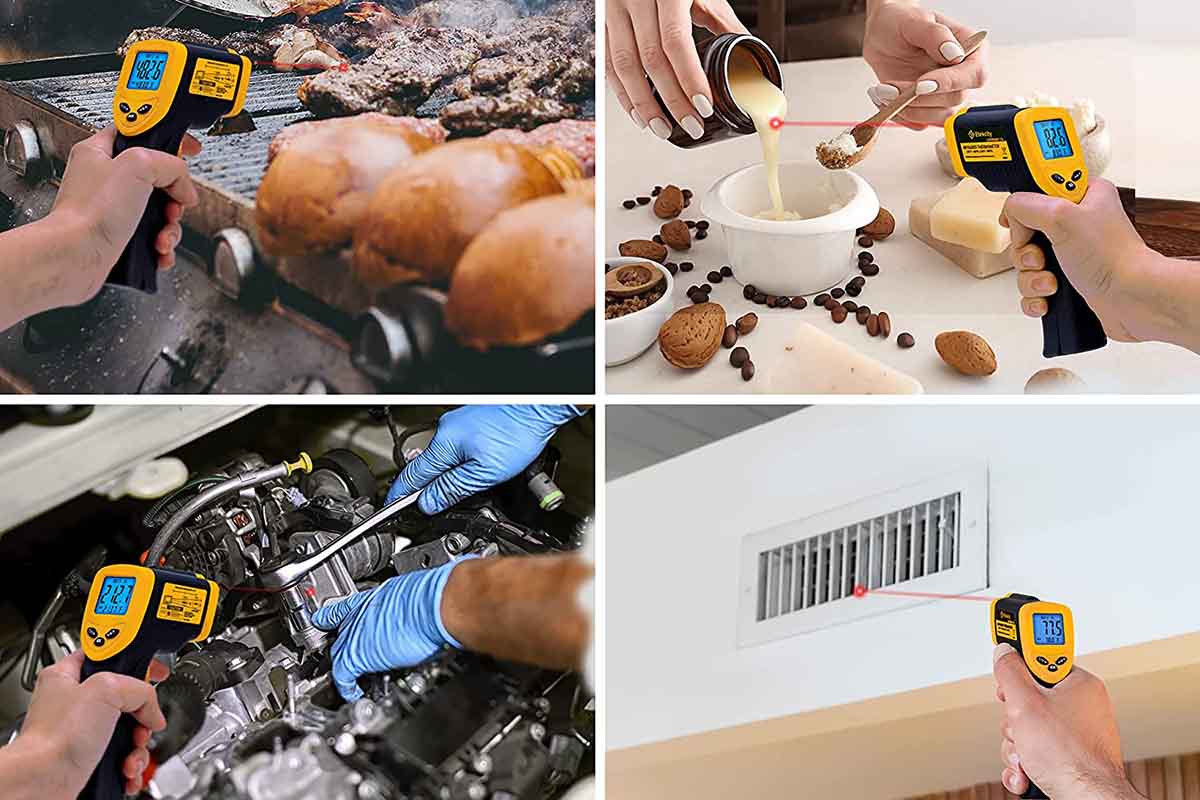Infrared thermometers are versatile devices used for measuring surface and body temperatures without physical contact. They find applications in various fields, from industrial settings to healthcare and home use. This comprehensive guide will walk you through the process of how to use infrared thermometer effectively and provide valuable tips for calibration, understanding their operation, and exploring their additional uses.
Getting Started with Infrared Thermometers
To get started with an infrared thermometer, familiarize yourself with its features and functionality. Read the manufacturer’s instructions to understand the specific operation and settings of your device.
Typically, infrared thermometers are easy to use. To obtain a temperature reading, ensure that the device is powered on, aim it at the target surface, and press the measurement button or trigger.
Keep in mind the recommended distance between the thermometer and the target for accurate results.
By following these basic steps, you can quickly and effectively begin using an infrared thermometer to measure temperatures again.
- Familiarize yourself with the device: Read the user manual provided by the manufacturer to understand the specific features and functionalities of your infrared thermometer.
- Power on the thermometer: Depending on the model, either press the power button or trigger to turn on the device. Refer to the user manual for the exact method.
- Check the battery: Ensure that the battery level is sufficient for accurate measurements. Replace or recharge the batteries as needed.
How to Easily Calibrate a Non-Contact Thermometer

Calibration is crucial for maintaining the accuracy of your infrared thermometer. Here’s a simple method for your ir thermometer calibration:
- Prepare a reference source: Obtain a calibrated reference thermometer or a known temperature source. It could be a vessel of water at a specific temperature or an ice-water bath.
- Adjust the emissivity setting: Some infrared thermometers allow you to adjust the emissivity setting. Set it to match the emissivity value of the surface you will be measuring.
- Compare readings: Point both the infrared thermometer and the reference thermometer at the same target surface or source. Compare the readings and make any necessary adjustments to the infrared thermometer’s calibration settings.
Understanding How Infrared Thermometers Work
Infrared thermometers measure temperature by detecting and capturing the infrared energy emitted by an object or surface.
Every object with a temperature above absolute zero emits this energy. The infrared thermometer uses a lens to focus the thermal radiation onto a detector, which converts the energy into an electrical signal.
The device then calculates the temperature based on the intensity of the signal. Additionally, it is important to note that infrared thermometers measure the surface temperature rather than the internal temperature of an object.
Understanding the basic principles of how these thermometers work helps in obtaining accurate temperature readings for various applications.
Read also about Infrared Electric Fireplace with Infrared Heater Guide
Using Infrared Thermometers for Surface Temperature Measurement

Infrared thermometers are commonly used to measure the temperature of surfaces without making direct contact. This feature makes them highly versatile in various industries and applications.
To measure surface temperature, aim the infrared thermometer at the desired area from the recommended distance. Ensure that there are no obstructions or reflective surfaces that could affect the readings.
By pulling the trigger or pressing the measurement button, the device captures and analyzes the infrared radiation emitted by the surface, displaying the temperature reading on its screen.
This non-contact method of surface temperature measurement is quick, efficient, and useful in a wide range of scenarios, including HVAC systems, electrical equipment, and cooking appliances.
When using an infrared thermometer for surface temperature measurement, keep the following points in mind:
- Measurement technique: Aim the infrared thermometer at the target surface, ensuring it fills the field of view entirely.
- Distance and focus: Follow the recommended distance-to-spot ratio specified by the manufacturer. Maintain a steady hand and keep the infrared thermometer close to the target surface for accurate readings.
- Angle of measurement: Holding the infrared thermometer perpendicular to the surface being measured is essential. Tilting the device may result in inaccurate temperature readings.
Infrared Thermometers Measure Surface Temperature
Infrared thermometers are designed to measure the temperature of the surface of an object without making physical contact.
They do this by detecting and capturing the infrared radiation emitted by the object.
This non-contact method allows for quick and convenient and accurate temperature measurement and measurements in various applications.
Take Measurements From a Distance
One of the advantages of using an infrared thermometer is that it allows you to measure temperature from a distance.
Different infrared thermometer models have specific distance-to-spot ratios, determining the measurement area at a given distance.
To ensure accurate readings, follow the manufacturer’s guidelines and maintain the recommended distance between the thermometer and the target surface.
Keep the Infrared Thermometer Close to the Target
While it is important to measure temperature from a distance, it is equally important to keep the infrared thermometer close to the target surface.
This ensures that the sensor of the thermometer captures the maximum amount of infrared radiation emitted by the surface, leading to more accurate temperature readings.
Holding the thermometer too far from the target may result in lower accuracy.
Does the Angle I Hold My Infrared Thermometer Matter?
Yes, the angle at which you hold the infrared thermometer can affect the accuracy of the temperature measurements.
For the most accurate readings, hold the thermometer perpendicular to the surface you are measuring.
Tilting the thermometer at an angle can cause the measurement area to shift and may result in inaccurate temperature readings. Keep the device level and aim it directly at the target surface.
Emissivity Affects Infrared Readings
Emissivity, the ability of a surface to emit thermal radiation, impacts the accuracy of infrared readings. Adjusting the emissivity setting on the infrared thermometer to match the surface being measured ensures more precise results.
This adjustment compensates for variations in emissivity, allowing for accurate temperature readings on surfaces with different materials and textures.
Using Infrared Thermometers for Body Temperature Measurement

People commonly use infrared thermometers for non-contact body temperature measurements.
To use them properly, turn on the thermometer, aim at the forehead from the recommended distance, and press the trigger or measurement button to obtain the temperature reading.
Remember to interpret the results in conjunction with other symptoms and seek professional medical advice for a comprehensive assessment.
How to Use Infrared Thermometer Properly
To use an infrared thermometer correctly, turn it on, let it stabilize if exposed to extreme temperatures, adjust any multifunctional settings, aim at the target surface or individual, and pull the trigger or press the measurement button to check the temperature on the screen.
Follow the manufacturer’s instructions for optimal usage and accurate results.
Turn on the Infrared Thermometer
Before using an infrared thermometer, make sure to turn it on by pressing the power button or trigger. Additionally, the device then calculates the temperature based on the intensity of the signal. It is important to note that infrared thermometers measure the surface temperature rather than the internal temperature of an object.
Activation allows the device to detect and measure the infrared radiation emitted by the target surface or individual.
Temperature Shocked?
If the infrared thermometer was stored in extreme temperatures, give it a few minutes to adjust to the surrounding ambient temperature. Temperature shock can affect accuracy, so allowing the device to stabilize ensures reliable readings.
Adjust Multifunctional Settings
Infrared thermometers may have multifunctional settings like temperature unit selection or memory functions.
Familiarize yourself with these settings and adjust them as needed for a more personalized experience.
Pull the Trigger to Check the Temperature on the Screen
After aiming the infrared thermometer at the target, pull the trigger or press the measurement button.
The device will capture and analyze the infrared radiation, displaying the temperature reading on the screen for quick and convenient results.
Exploring Additional Uses of Infrared Thermometers
Infrared thermometers have versatile applications, including checking grill temperature and measuring oven temperature.
They provide convenience and efficiency in a wide range of temperature measurement tasks.
Can I Check My Grill Temperature with an Infrared Thermometer?
Certainly, you can use an infrared thermometer to check the temperature of a grill. Simply aim the device at the grill surface to monitor and adjust the temperature as needed.
Can I Use an Infrared Thermometer to Measure the Temperature of My Oven?
Yes, an infrared thermometer can measure the temperature of an oven. Point the device at the oven walls or racks to get an indication of the internal temperature.
Maintenance and Troubleshooting of Infrared Thermometers
To maintain optimal performance, it is advisable to periodically clean the lens and body of the thermometer clean it with a soft cloth. If troubleshooting is necessary, consult the manufacturer’s instructions or reach out to their support for assistance.
Do I Need to Clean My Infrared Thermometer?
To maintain accuracy, experts recommend periodically cleaning the lens and body of the infrared thermometer. Use a soft cloth to remove dirt, dust or debris.
How Do I Turn the Laser On and Off?
For infrared thermometers with a laser feature, consult the manufacturer’s instructions on how to turn the laser on or off. Typically, there is a dedicated button or switch for this function.
Can I Calibrate My Infrared Thermometer Myself?
Calibration procedures vary depending on the model. Having professional calibration is generally recommended to ensure accuracy.
Refer to the user manual or contact the manufacturer for guidance on calibration procedures.






